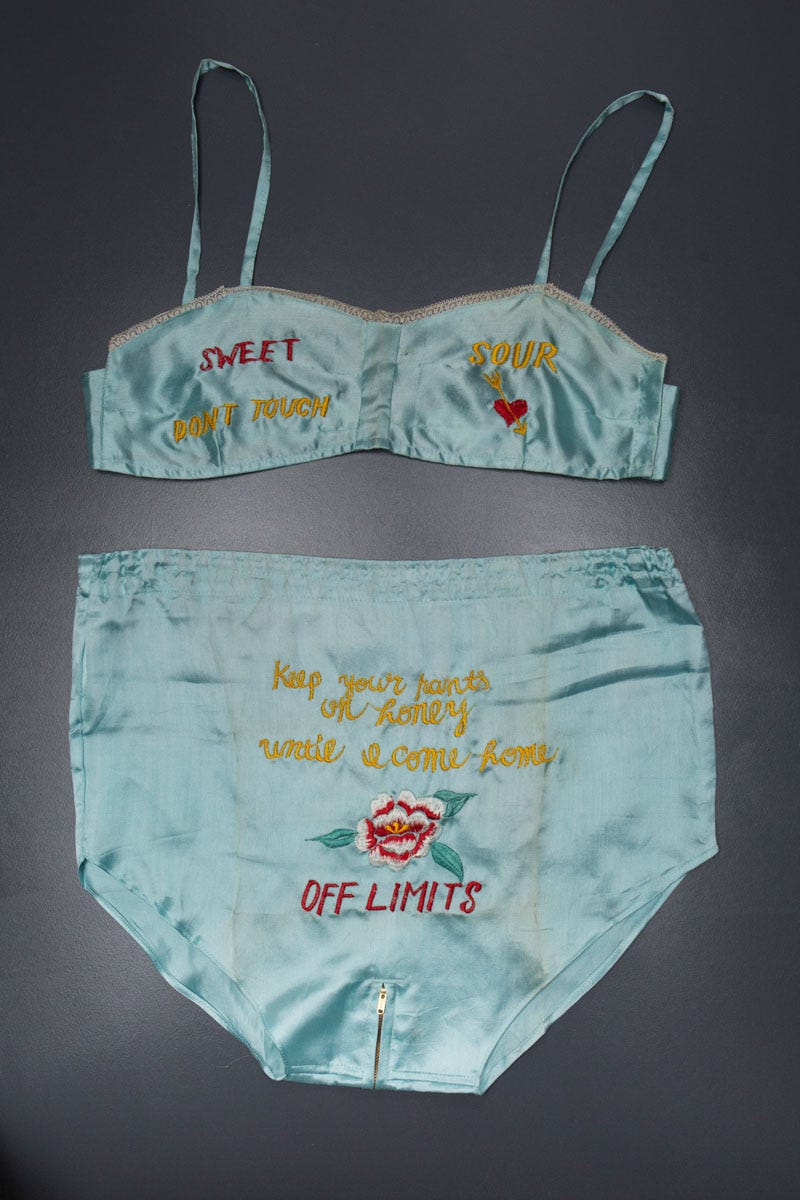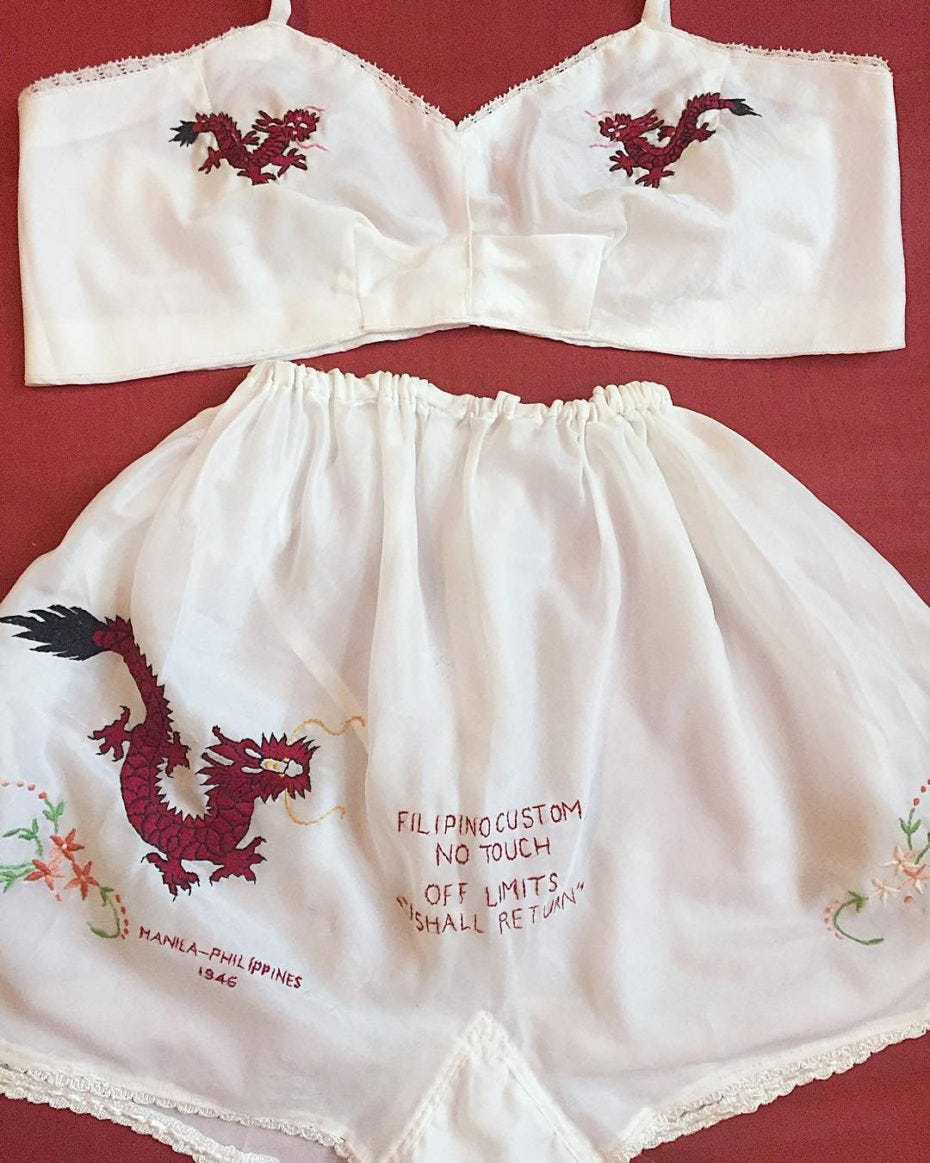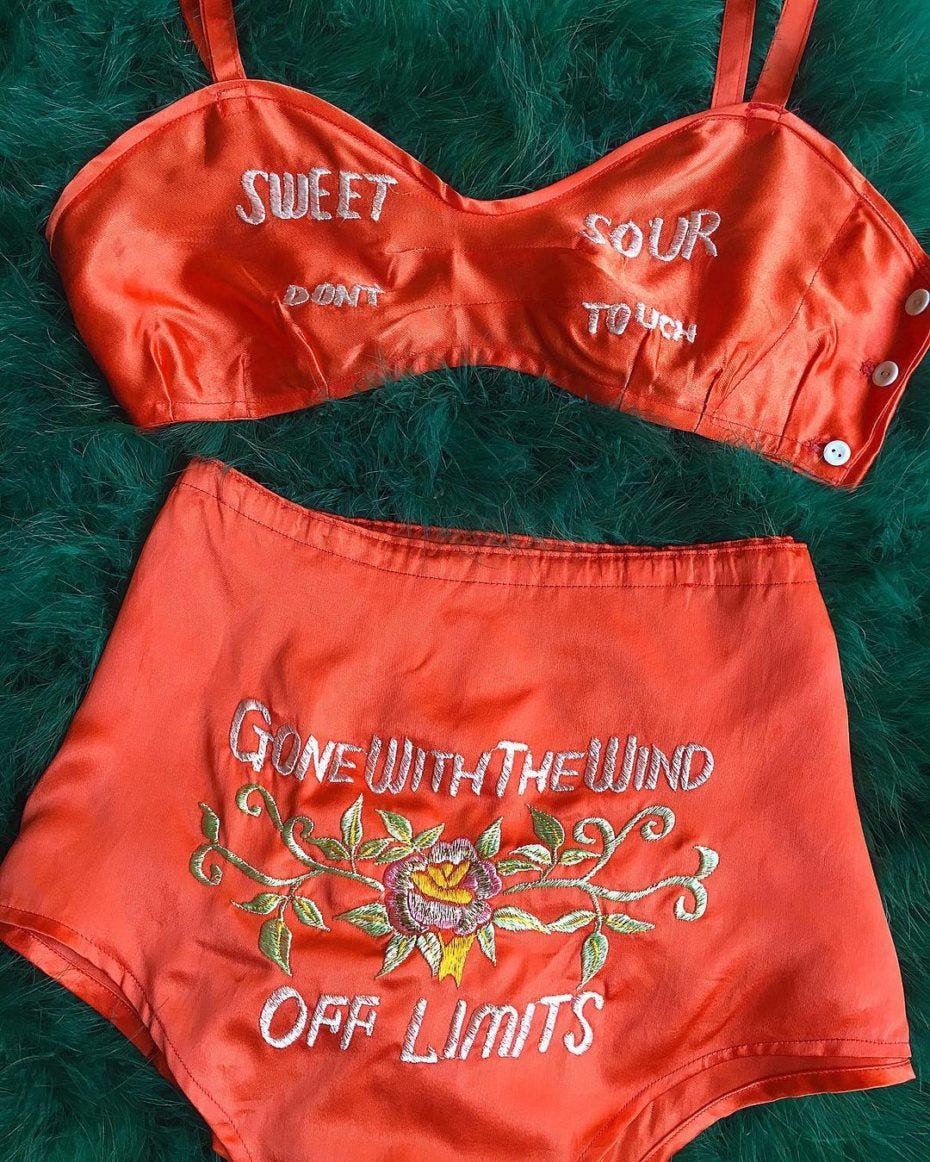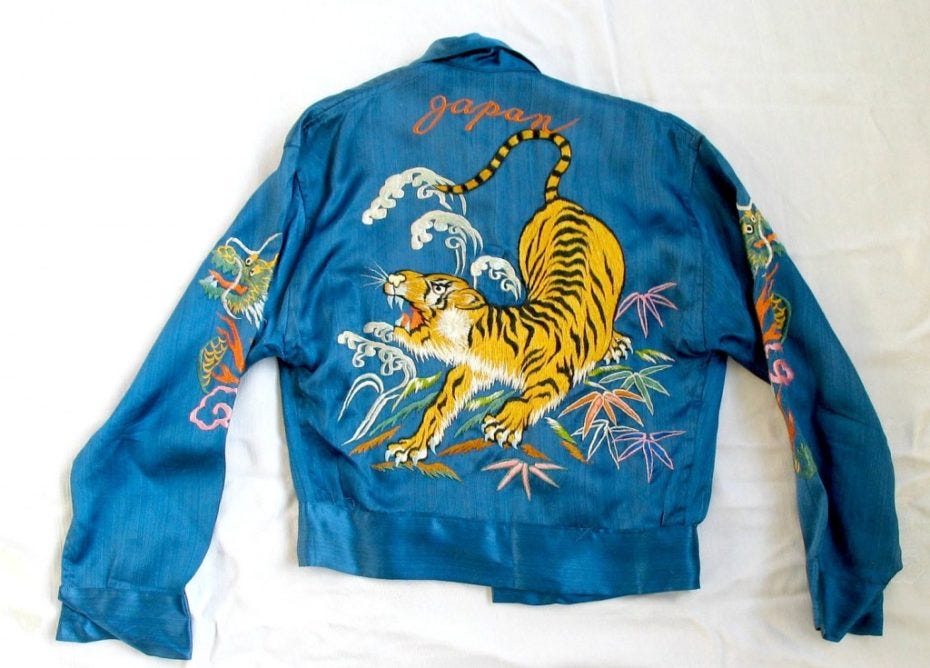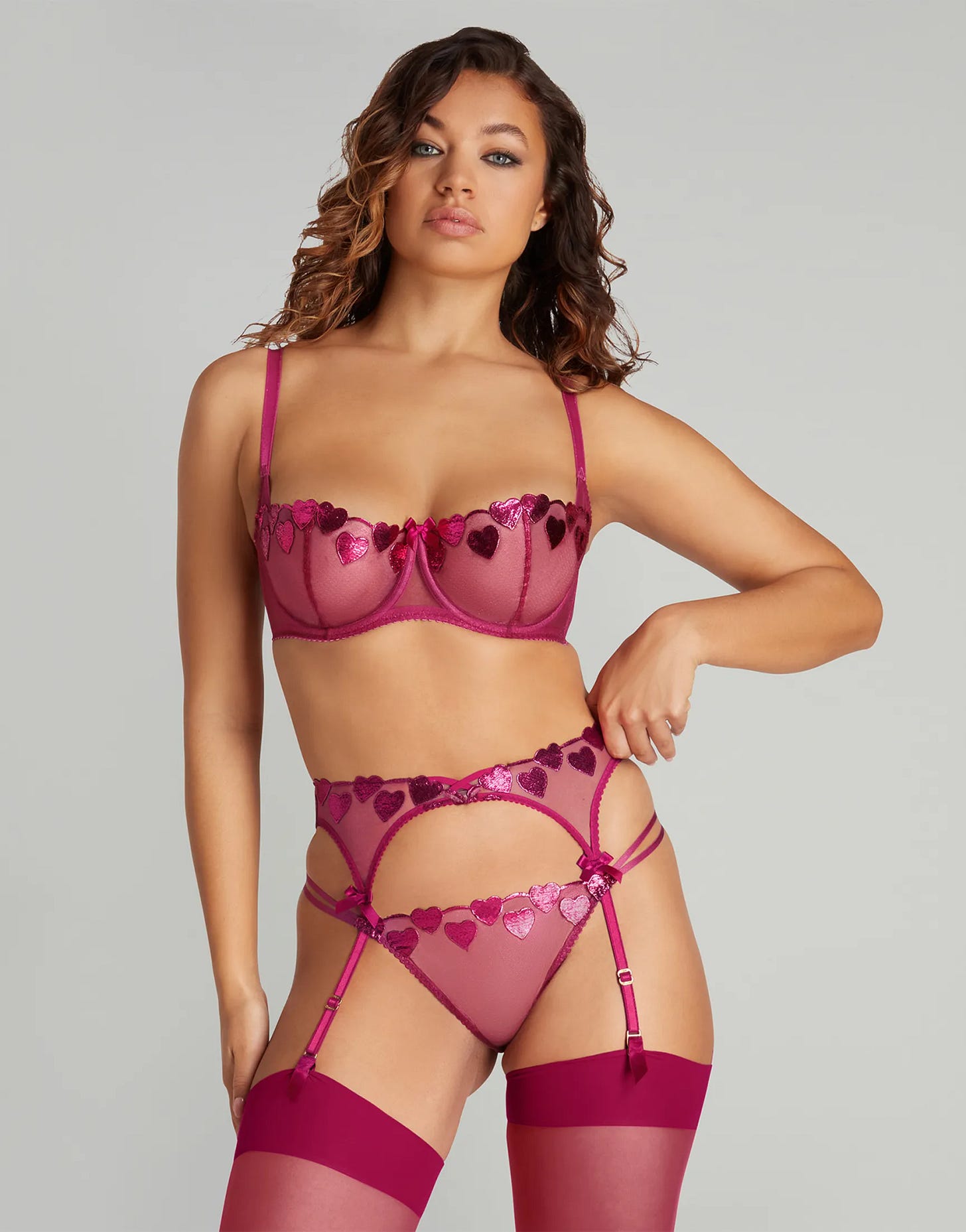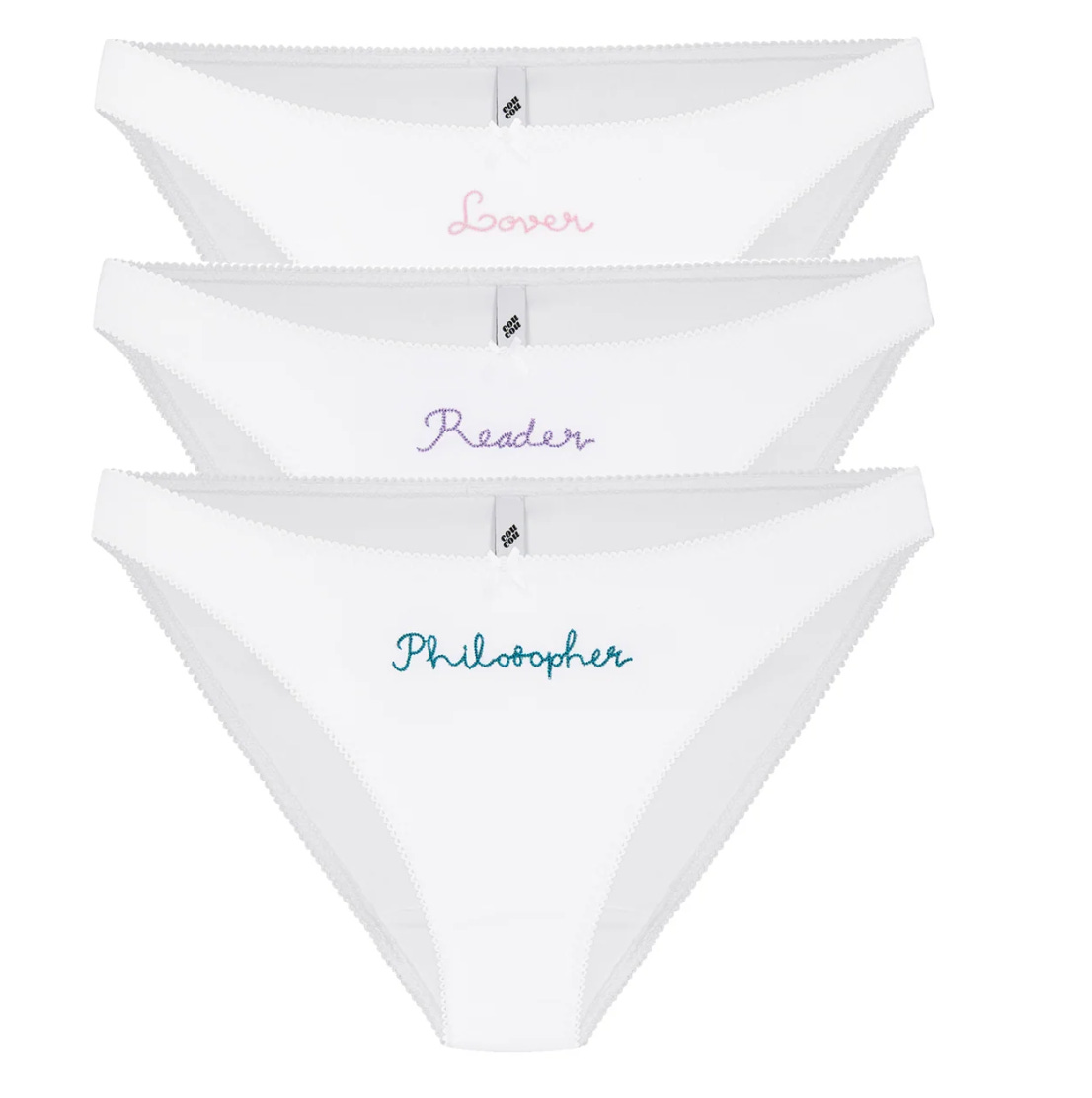Sweetheart Lingerie: When Love, War, and Silk Panties Collide
The History of Gifting Sexy Lingerie
It’s Valentine’s Day and I love Valentine’s Day. Capitalism really popped off with this on. What can I say? I love love!!! Also, pink and red are one of my favorite color combinations, so.
Anyway, lingerie has long been a staple in Valentine’s Day gifting culture, and over the last couple of years I’ve seen a rise in intrigue around Sweetheart Lingerie of the 1940s.
Just like lingerie today, I’ve realized that we are very quick to dismiss the darker associations and histories of these garments in exchange for something cute and kitschy, so let’s unpack some of that.
Sweetheart Lingerie was introduced to the Sates by American soldiers after World War ll. The soldiers were stationed around East Asia after the surrender of Japan, and during this post-war occupation, they purchased embroidered underwear as gifts or souvenirs to give on their return or send back home to their sweethearts.
Typically made of rayon, these undergarments were often adorned with playful, cheeky phrases such as “Don’t Touch” and “Hands Off!” Others featured pop culture references like “Gone with the Wind,” a nod to one of the most popular films of the era. Some pieces even bore the name of the military base and year of service, while a few incorporated naughty design elements, like zippered crotches.
A notable aspect of sweetheart lingerie was its appropriation of Asian aesthetics. Many pieces were embroidered with motifs of dragons, flowers, or phrases like “Sweet and Sour” (a reference to sweet and sour sauce), as these aesthetics were often appropriated and repackaged for a Western audiences. Orientalist tropes were very prevalent at the time, and these designs were similar to the silk bomber jackets soldiers brought back with them. As the story goes, a single US soldier took his flight jacket to a local tailor in Yokosuka after World War ll to have it embroidered with his name and with colorful oriental designs as a keepsake for his time served abroad.
In Edward Said’s concept of Orientalism, he describes how Western cultures have historically exoticized and eroticized the East, framing it as a land of mystery, sensuality, and conquest. Sweetheart lingerie fits this pattern, serving as both a souvenir of war and a romanticized token of “exotic” love. The zipped crotches and provocative slogans further highlight the tension between eroticism and power. While these garments were intended more as a light hearted joke than something to actually wear, they also reflect a colonial gaze that reduces Eastern aesthetics to kitschy, sexualized commodities.
However, I suppose as long as something is charming, glamorizing times of death and destruction is okay. It’s fascinating how we’ve taken something oppressive and use it in an intimate way. Perhaps it’s true that men don’t “own” women anymore, but even if you are buying lingerie “for yourself,” one cannot deny its roots in patriarchy and colonization. The history of gifting intimates doesn’t begin here, though.
Noblewomen in medieval Europe were sometimes gifted finely crafted chemises or corset-like garments as part of their bridal trousseau, hinting at the early connection between lingerie and romance. Then in the 19th century wealthy suitors or husbands often gifted ornate corsets, petticoats, and lace-trimmed chemises to their brides as a sign of affection and status. The Victorian era was defined by stricter moral codes, and yet a fascination with romance and sensuality persisted. Lingerie gifting, especially for weddings and anniversaries became more common. Nightgowns and embroidered undergarments were often included in a bride’s dowry, reinforcing the connection between lingerie and marital intimacy.
By the 1920s lingerie became less restrictive and more playful, with couples being a little more liberated in their views. In the mid-20th century, actresses like Marilyn Monroe and Rita Hayworth popularized silk robes, lace bras, and sultry nightgowns, making lingerie more of a symbol of allure. Brands like Frederick’s of Hollywood and Vanity Fair capitalized on this trend, marketing lingerie as the perfect romantic gift for Valentine’s Day. When Victoria’s Secret was founded in 1977, sexy lingerie became more of an everyday thing instead of something just reserved for special occasions, because a wife should always be desirable.
To this day, lingerie continues to be something that is usually more of a gift for the person buying it than the person receiving it. Even if it’s a gift for yourself, with intentions of empowerment and feeling good, there is no escaping the fact that it’ll never be that simple. I love a lacy little garment just as much as the next person. I love a slip and I love underwear as outerwear. However, it’s important to consider why it is that we associate certain things with being desirable and feeling good. If we lived in a vacuum without any influence, would that still be true?
Comfortable and practical lingerie is rarely celebrated in advertising, suggesting that looking sexy remains the ultimate goal. Angela McRobbie argues that modern lingerie advertising "sells empowerment as a new form of female submission,” encouraging women to see themselves through the lens of desirability rather than pure self-expression.
There’s this space where intimacy meets consumerism, and this tension is evident in contemporary lingerie branding. While brands like Savage X Fenty and SKIMS emphasize diversity and inclusivity, they still frame lingerie as a product that should enhance the body’s appeal rather than just provide comfort or functionality. This echoes the historical tradition of gifting lingerie— where men often purchase undergarments for their wives or partners, reinforcing the idea that lingerie is meant to be seen, admired, and consumed by others rather than simply enjoyed by the wearer.
So, are we truly reclaiming lingerie as a tool of empowerment, or are we still playing into historical narratives that prioritize the giver’s gaze over the wearer’s comfort and agency? Probably a little bit of both.
As usual, this is not written with the goal of making you feel shame for ever wearing something itty bitty, made of lace and silk. I still do and I still will! There’s no need to do a complete overhaul of your intimates drawer. As always with posts like this one, or the one about tradwife fashion, etc. it’s just a reminder to be mindful of the garments you engage with, regardless of whether they be historical or contemporary.
TTYL!!!
xx





